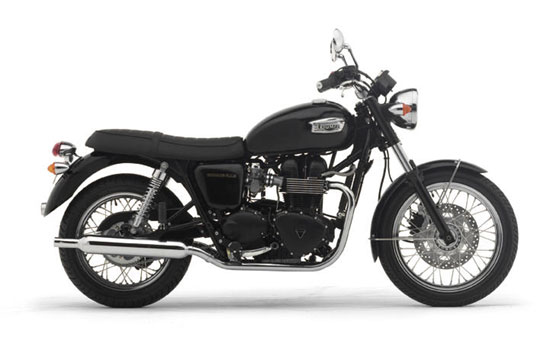
You are here: Home — 2004 Motorcycle Models — 2004 Triumph Motorcycle Models
2004 Triumph Bonneville
Back to 2004 Triumph Motorcycle Index Page
Click photo to enlarge.
It makes a great desktop image.
– 2004 Triumph Bonneville
Few motorcycles are as evocative to so many as the Bonneville surely is.
For 2004 a new, crisp black engine finish adds a subtle counterpoint to the existing handsome, polished aluminium option. But no matter which way the Bonneville’s air-cooled 790cc twin-cylinder engine is dressed it combines a simple, timeless look with modern engineering techniques and materials. Both pistons rise and fall together – via a 360° crankshaft firing interval – so the classic feel and character of a British twin-cylinder engine is retained. To provide some modern-day civility, twin balancer-shafts add refinement.
Thus the present-day ‘Bonnie’ maintains a mechanical link to its distant forbears of the ’60s while at the same time providing a thoroughly modern engine with plenty of power. Its engine produces 62PS (61bhp) at 7,400 rpm. Ninety percent of peak torque – a very healthy 60Nm (44.3ft.lbf) – is delivered from 2,750 rpm and maintained through to the redline, providing smooth acceleration in any of the five gears.
Electrically heated twin 36mm carburettors feed the engine and are fitted with throttle position sensors. A pair of ‘peashooter’ style silencers deals with spent gases and enhances the traditional look as does the triangular engine cover and left-hand side clutch casing, which are quintessentially Triumph.
The Bonneville is an easy-to-manage motorcycle, thanks to a low seat height of 775mm – 30.5-inches – and similarly low centre of gravity. The tubular steel double cradle frame and box-section swingarm are immensely strong and the steering geometry (rake and trail are 29° and 117mm respectively) provides composure at speed as well as ensuring the Bonnie needs only light input at the handlebars. Manoeuvrability in an urban environment is excellent too.
Thoroughly modern tyres – the front is a 100/90-R19, rear’s a 130/80-R17 – and the braking set-up of single front 310mm disc and 255mm rear, both worked on by powerful twin-piston calipers, equates to thoroughly modern-day road-holding, handling and stopping. The Bonneville’s understated, single-tone paint schemes of Jet Black or Cardinal Red (polished engine only) adds an underscore of class to its classic lines. One thing’s for sure – Triumph’s twin matches authenticity and tradition to the needs of modern motorcyclists. And does it in style.
Specification changes for 2004:
Jet Black paint scheme available with either polished engine covers or new black engine finish.
Colour options:
– Jet Black
– Cardinal Red
2004 Triumph Bonneville Specifications:
ENGINE
Type Air-cooled, DOHC, parallel-twin, 360º firing interval
Capacity 790cc
Bore/Stroke 86 x 68mm
Compression Ratio 9.2:1
Fuel System Twin carburettors with throttle position sensor and electric carburettor heaters
Ignition Digital – inductive type
TRANSMISSION
Primary Drive Gear
Final Drive X ring chain
Clutch Wet, multi-plate
Gearbox 5-speed
CYCLE PARTS
Frame Tubular steel cradle
Swingarm Twin-sided, tubular steel
Wheels Front 36-spoke, 19 x 2.5in
Rear 40-spoke, 17 x 3.5in
Tyres Front 100/90 R 19
Rear 130/80 R 17
Suspension Front 41mm forks
Rear Chromed spring twin shocks with adjustable preload
Brakes Front Single 310mm disc, 2 piston caliper
Rear Single 255mm disc, 2 piston caliper
DIMENSIONS
Length 2250mm (88.6in)
Width (Handlebars) 860mm (33.8in)
Height 1105mm (43.5in)
Seat Height 775mm (30.5in)
Wheelbase 1493mm (58.8in)
Rake/Trail 29º/117mm
Weight (Dry) 205kg (451lb)
Fuel Tank Capacity 16 litres (4.2 gal US)
PERFORMANCE
(MEASURED AT CRANKSHAFT TO DIN 70020)
Maximum Power 62PS (61bhp) at 7,400 rpm
Maximum Torque 60Nm (44.3ft.lbf) at 3,500 rpm
Two Year Unlimited Mileage Warranty
Riders Association Triumph Membership Included
Specifications are subject to change without notice, in accordance with national regulation and legislations.



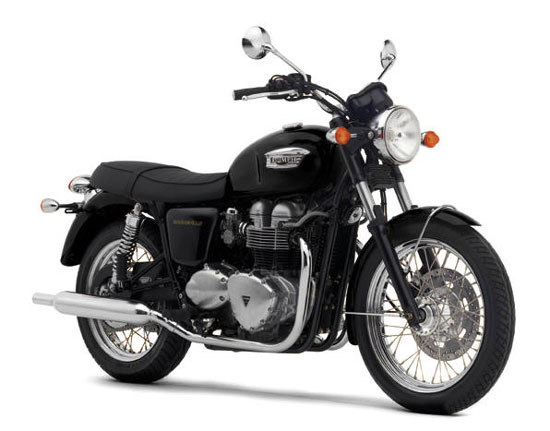
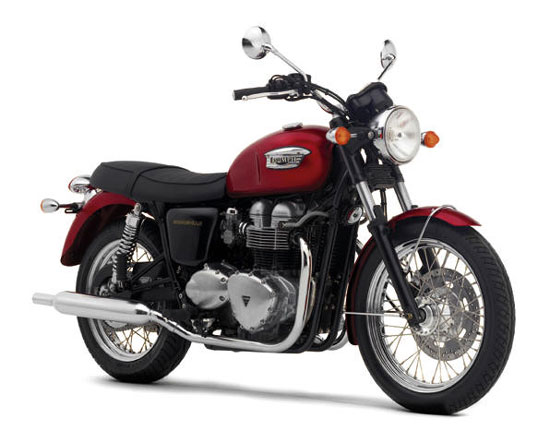
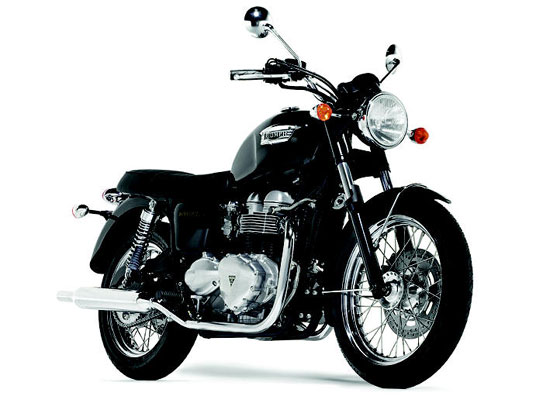
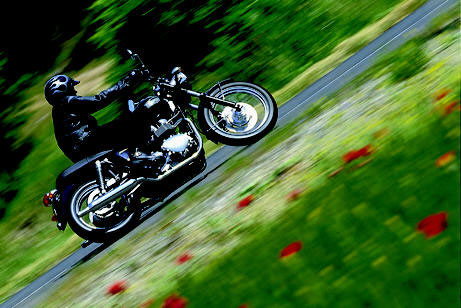
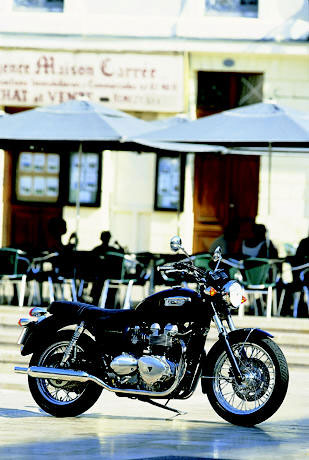
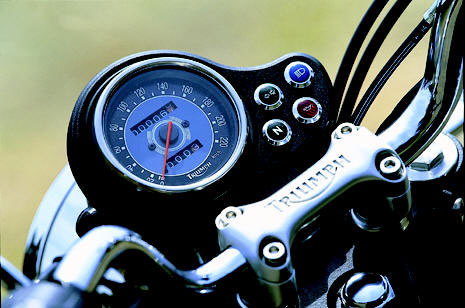
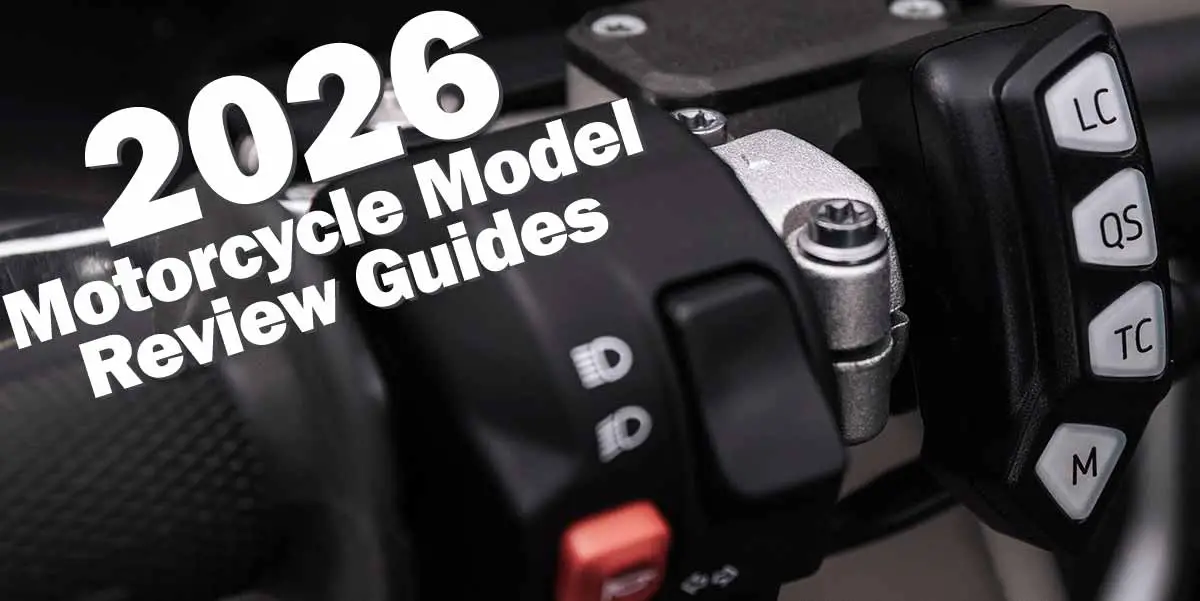
Be the first to comment